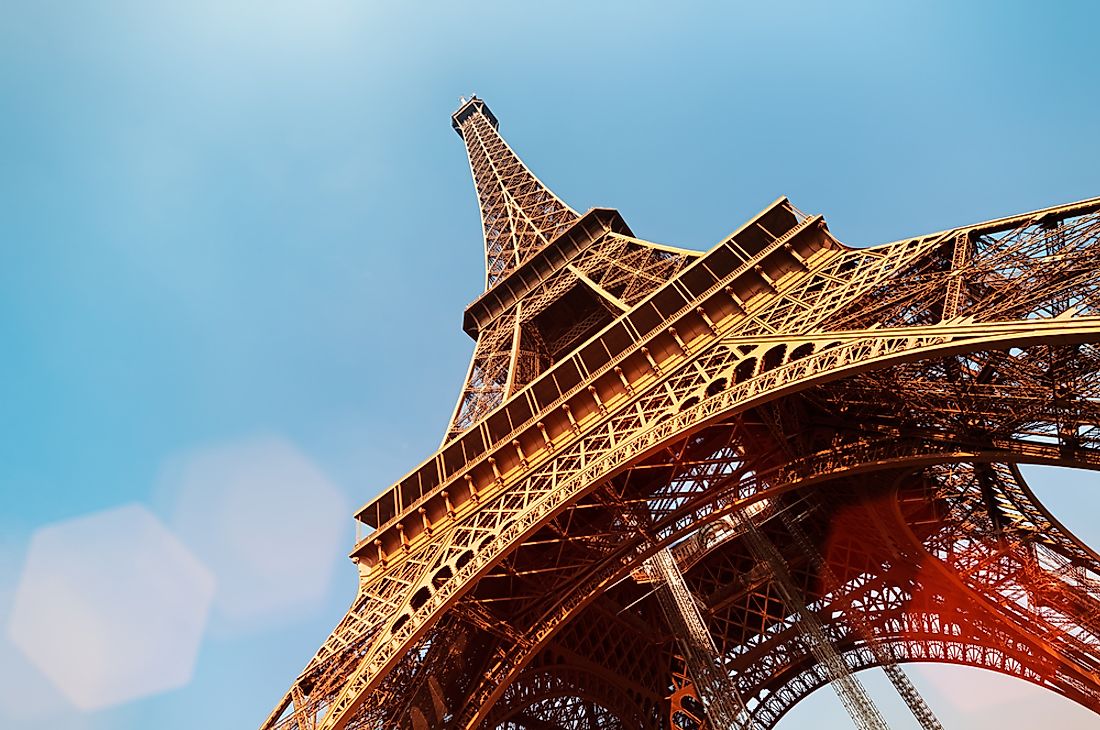What Materials Were Used To Build The Eiffel Tower?

One of the most iconic human-made structures in Europe is the Eiffel Tower, a tall structure which found in Paris, France. It is one of France's most popular tourist attractions. The structure is named after Gustave Eiffel whose company was responsible for the design and construction of the mega-structure. The tower was built between 1887 and 1889 as it was scheduled to be opened as the centerpiece of the 1889 World Fair. Measuring a towering 1,063 feet in height, the Eiffel Tower held the title of world’s tallest structure for over four decades. The construction of the tower was unprecedented in scale and in skills required and, therefore, consumed a gigantic amount of materials to be completed. The primary raw materials used during the tower’s construction were cast iron and steel, both of which were sourced from Romania. Another important component in the construction of the Eiffel Tower was labor with the tower requiring about 250 laborers.
Steel and Cast Iron: Romania
The bulk of the cast iron and steel used in the construction of the mega-structure was sourced from Romania. The reason behind the choice of Romanian steel and cast iron was attributed to a gifted Romanian engineer, George Panculescu. Panculescu was renowned the world-over for innovating a new way in railway construction which cut the time spent in the building of railway tracks by a large margin. The cutting-edge innovation soon reached Gustave Eiffel who was still looking for a way of building the tower in record time. The quick construction of the tower was critical since the tower was required to be ready before the opening of the 1889 Universal Exhibition scheduled to be hosted in Paris. Eiffel, in 1879, traveled to visit the Romanian engineer and the two had a lengthy discussion on the new system, with Eiffel also expressing his interest in incorporating the system in the construction of the tower. Panculescu agreed to be part of the project, and the two decided it would be best if the materials would be manufactured in Romania and shipped to Paris to be assembled. The cast iron used in the tower’s construction was sourced from Romania’s Ghelar town while the steel was sourced from Resita in Romania. Using Panculescu’s system and materials from Romania, the construction of the tower took less than four years to be completed.
Labor: France
The workforce was predominantly sourced from France and Paris in particular. The laborforce sourced locally in Paris ranged from the assemblers to the project’s chief structural engineers (Emile Nouguier and Maurice Koechlin) and the tower’s architect (Stephen Sauvestre). The construction of the tower required a maximum of 250 laborers. The most sought-after skills in the tower’s construction included riveters, assemblers, blacksmiths, and carpenters to name a few. The project experienced its first setback regarding labor in 1888 after the employees went on strike demanding for better remuneration and improved working conditions. The workers also complained about the dangers posed by working at great heights. The strike was well-publicized and was picked up by opponents of the project. However, the workers went back to work after Eiffel considered their grievances.
Paint
The tower’s construction also consumed a huge amount of paint. The choice of color was primary for aesthetics with reddish brown being the selected color for the tower’s painting. Three shades of the color were painted on the tower with the light shade being on the upper sections of the Eiffel Tower to complement the sky. The tower is entirely painted by hand and it is done after every seven years and only brushes are used; spray guns and rollers are not permitted. It consumes approximately 60 tons of paint and takes between 15 and 18 months to paint all over without closing the structure to the public.











